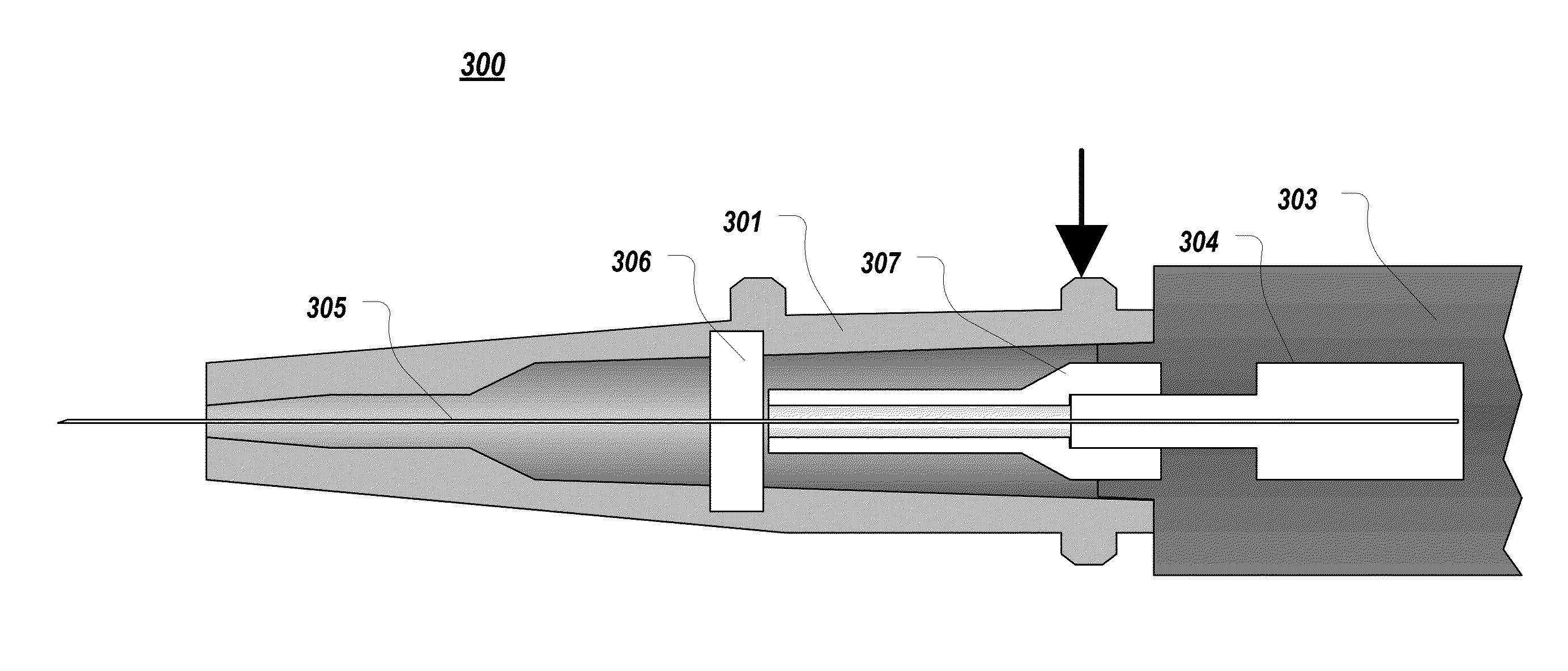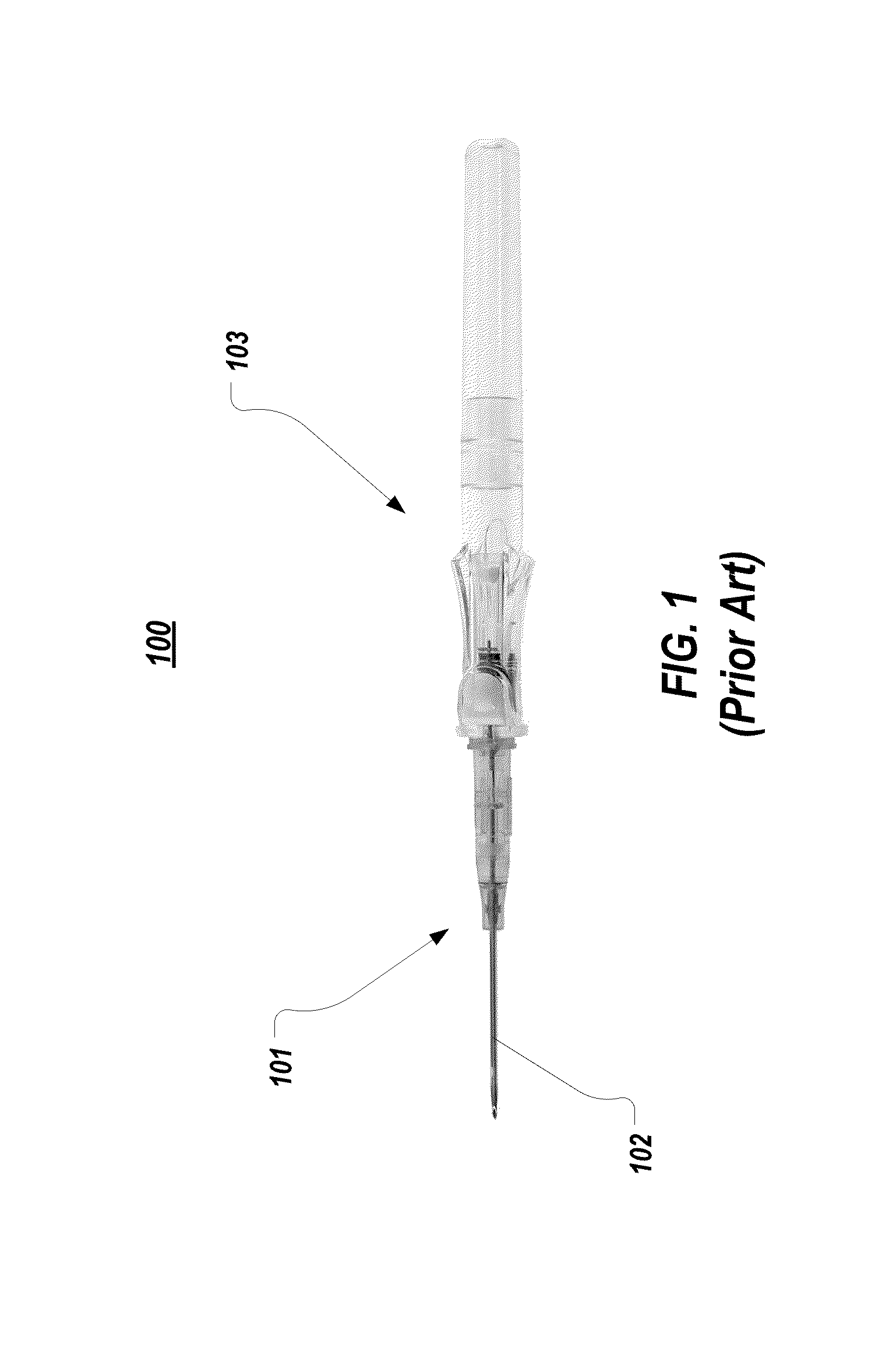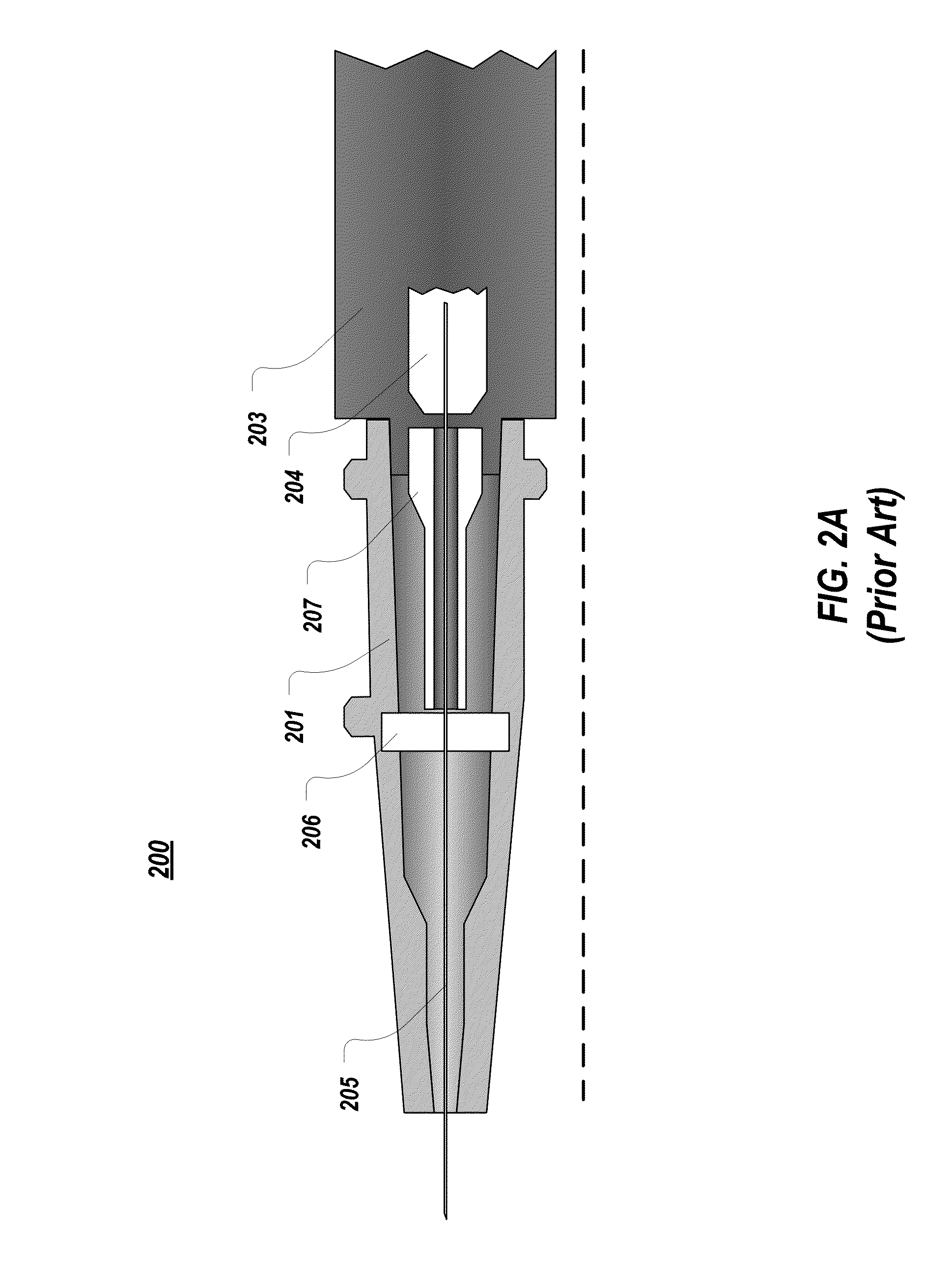Interlocking needle hub and catheter hub actuator to increase rigidity of iv catheter assembly
a technology of iv catheter and actuator, which is applied in the direction of catheters, other medical devices, and guide needles, etc., can solve the problems of limited options, limited flexibility between components, and difficulty of clinicians, so as to increase the vertical rigid increase the rigidity of the catheter assembly, and increase the vertical rigidity
- Summary
- Abstract
- Description
- Claims
- Application Information
AI Technical Summary
Benefits of technology
Problems solved by technology
Method used
Image
Examples
Embodiment Construction
[0042]The presently preferred embodiments of the present invention will be best understood by reference to the drawings, wherein like reference numbers indicate identical or functionally similar elements. It will be readily understood that the components of the present invention, as generally described and illustrated in the figures herein, could be arranged and designed in a wide variety of different configurations. Thus, the following more detailed description, as represented in the figures, is not intended to limit the scope of the invention as claimed, but is merely representative of presently preferred embodiments of the invention.
[0043]The present invention extends to a design of a needle hub and an actuator of a catheter assembly that allows the needle hub and actuator to interlock within the catheter hub. This interlocking allows the needle hub to be inserted into the catheter hub thereby increasing the rigidity of the catheter assembly. The interlocking can be accomplished ...
PUM
 Login to View More
Login to View More Abstract
Description
Claims
Application Information
 Login to View More
Login to View More - R&D
- Intellectual Property
- Life Sciences
- Materials
- Tech Scout
- Unparalleled Data Quality
- Higher Quality Content
- 60% Fewer Hallucinations
Browse by: Latest US Patents, China's latest patents, Technical Efficacy Thesaurus, Application Domain, Technology Topic, Popular Technical Reports.
© 2025 PatSnap. All rights reserved.Legal|Privacy policy|Modern Slavery Act Transparency Statement|Sitemap|About US| Contact US: help@patsnap.com



